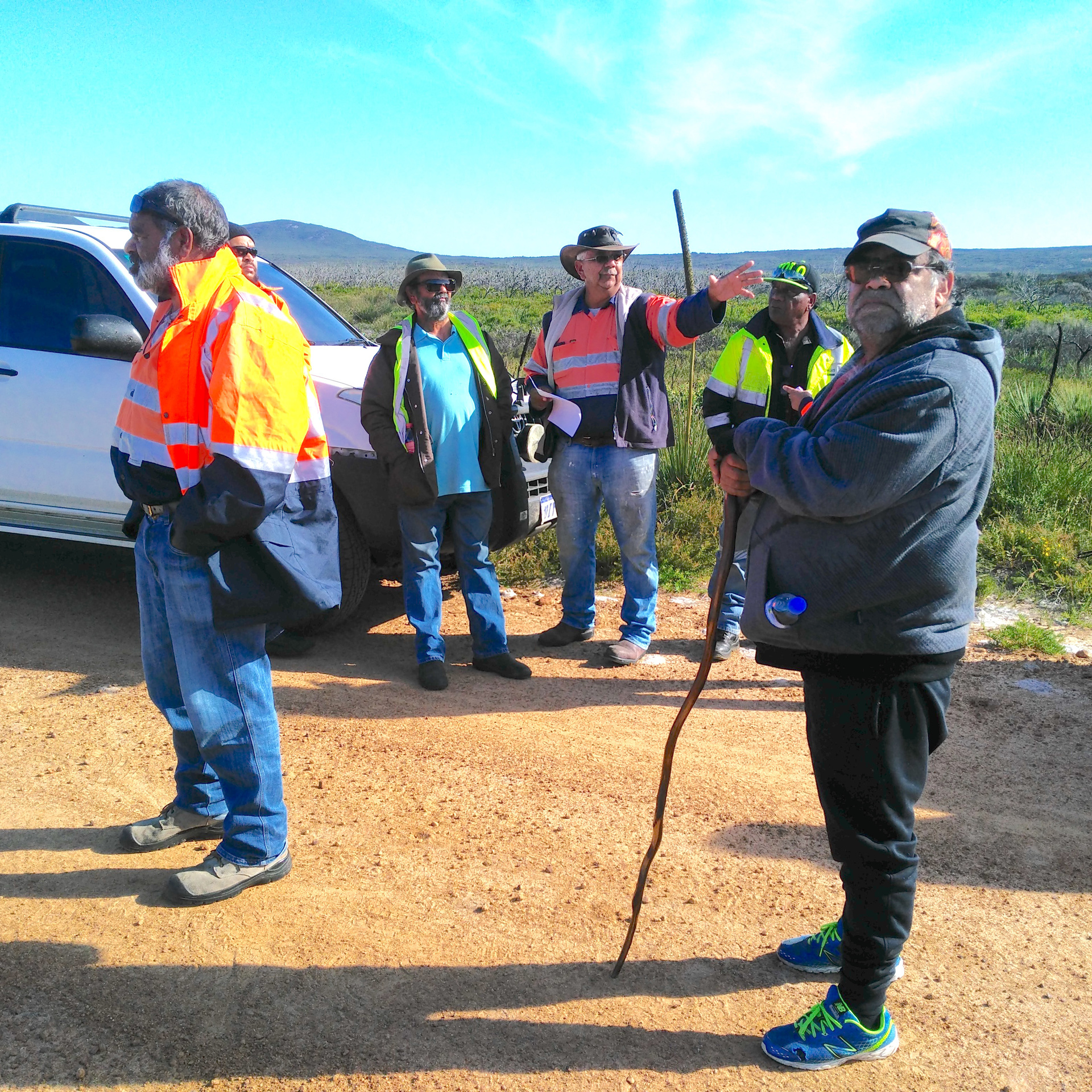Cultural Heritage
A history hidden in plain sight
Archaeological evidence in Esperance shows a history of occupation and use by social groups extending back at least 13,000 years. Elsewhere on Wudjari Nyungar country, much older evidence of occupation has been found.
Stone artefacts, tool making sites, lizard traps, gnamma holes (man-made granite waterholes), burials, quarry sites, rock-art, and ceremonial places and materials all exist throughout Kepa Kurl Wudjari country. These are physical manifestations of the ways in which Wudjari people engage with these landscapes.
Some cultural places don't have artefacts or other physical reminders of their past but are parts of the stories of how our country came to be, and important markers along the travel routes we used.
Discovery, respect and maintenance
It is important for us that all these places are managed and maintained in the right ways. Doing so, maintains our connection to ancestors and our obligations to care for their ancestral lands. ETNTAC looks for ways to help our members regularly visit cultural sites to reinvigorate the stories of these places and pass the knowledge on to the younger generation. Across 2019/20 we delivered over $700,000 in cultural protection and reconnection projects working with a variety of stakeholders. Examples of our projects can be found here.
Heritage
Traditionally people asked for permission to visit sites on Kepa Kurl Wudjari country. Today, State instrumentalities who propose to carry out works on Wudjari country consult with ETNTAC through an Indigenous Land Use Agreement, which includes a Government Standard Heritage Agreement (GSHA) for use by Government agencies. Resource explorers work with us through a Proponent Standard Heritage Agreement.
In the course of doing so, we regularly engage heritage professionals and traditional owners to record, and then manage, the cultural values existing on country that may be impacted by public and private works.



ETNTAC shares the commonly held view that the Aboriginal Heritage Act 1972 (the Act) fails to meet, or uphold, the rights and reasonable expectations of Aboriginal people. ETNTAC welcomes the WA Government's review of this Act and the intent to provide Aboriginal people in WA with a real role in decisions affecting their heritage. In particular, ETNTAC is a strong advocate for a new definition of 'place' in the Act that recognises Nyungar cultural systems are interwoven with landscapes and ecosystems.
We also assist other organisations to deliver their services in a culturally secure and inclusive ways. Through our deep community connections we are able to be the interface between government and industry and the Indigenous community. For example, recently we have facilitated the Shire of Esperance's community consultations regarding its inaugural Reconciliation Action Plan, helped the Department of Training and Workforce Development design a culturally engaging new Esperance TAFE complex and developed Wudjari content and designs for public artwork to be incorporated into the construction of the replacement jetty on the headland alogn the Kepa Kurl Foreshore.
If you would like to contact us about any issues associated with cultural heritage, or if you would like to submit an activity notice, please complete our online Heritage Enquiry Form. We look forward to hearing from you.
-
Related
Strategic Objectives -
Related
Project
Help support us
Partner with us to make a difference.